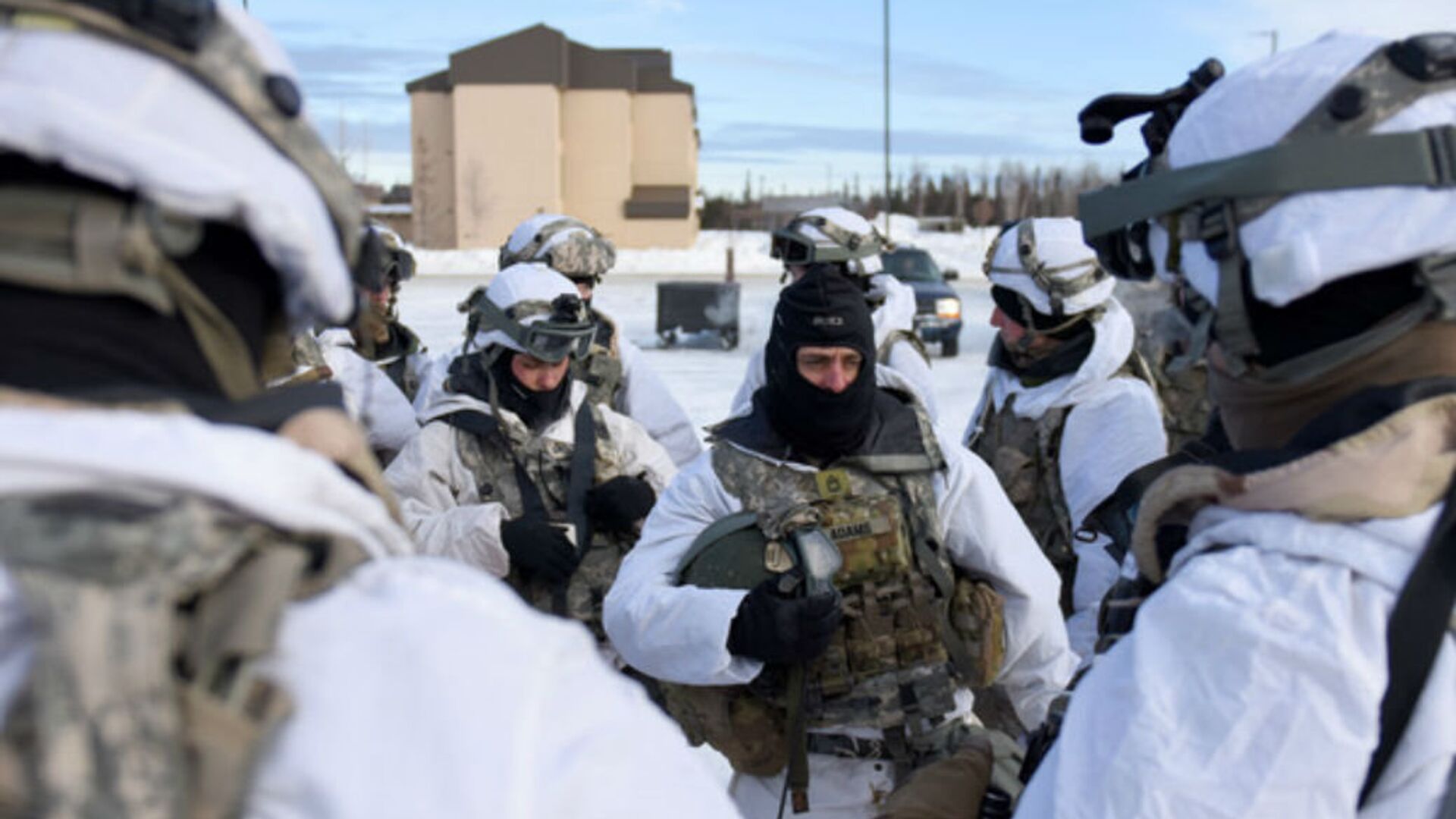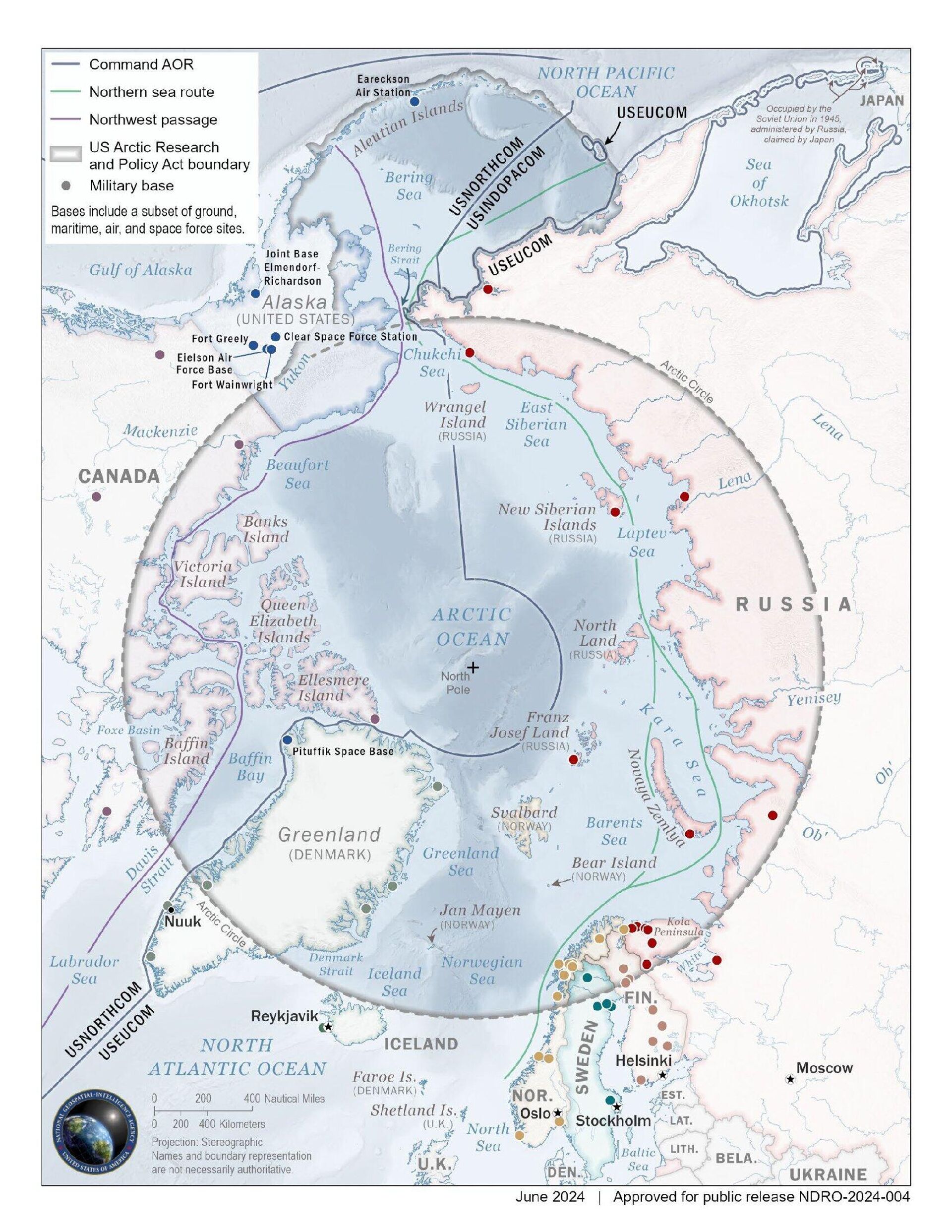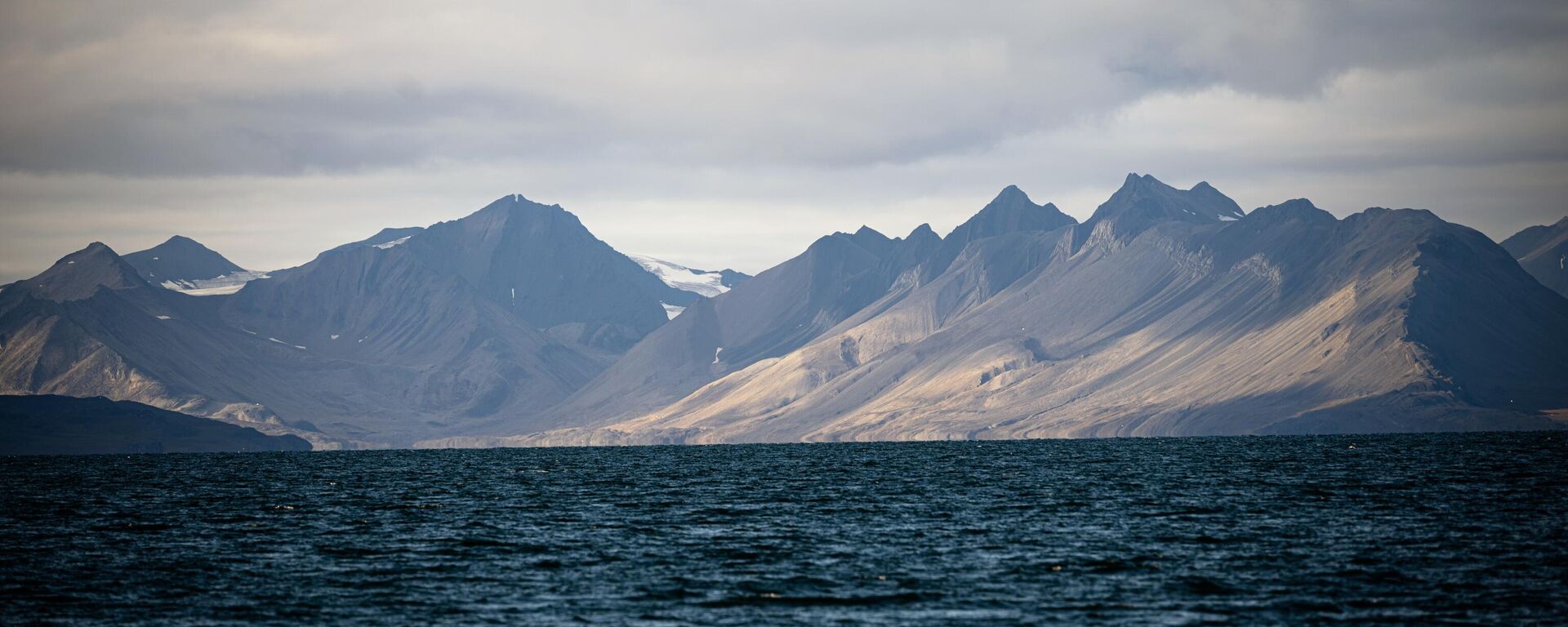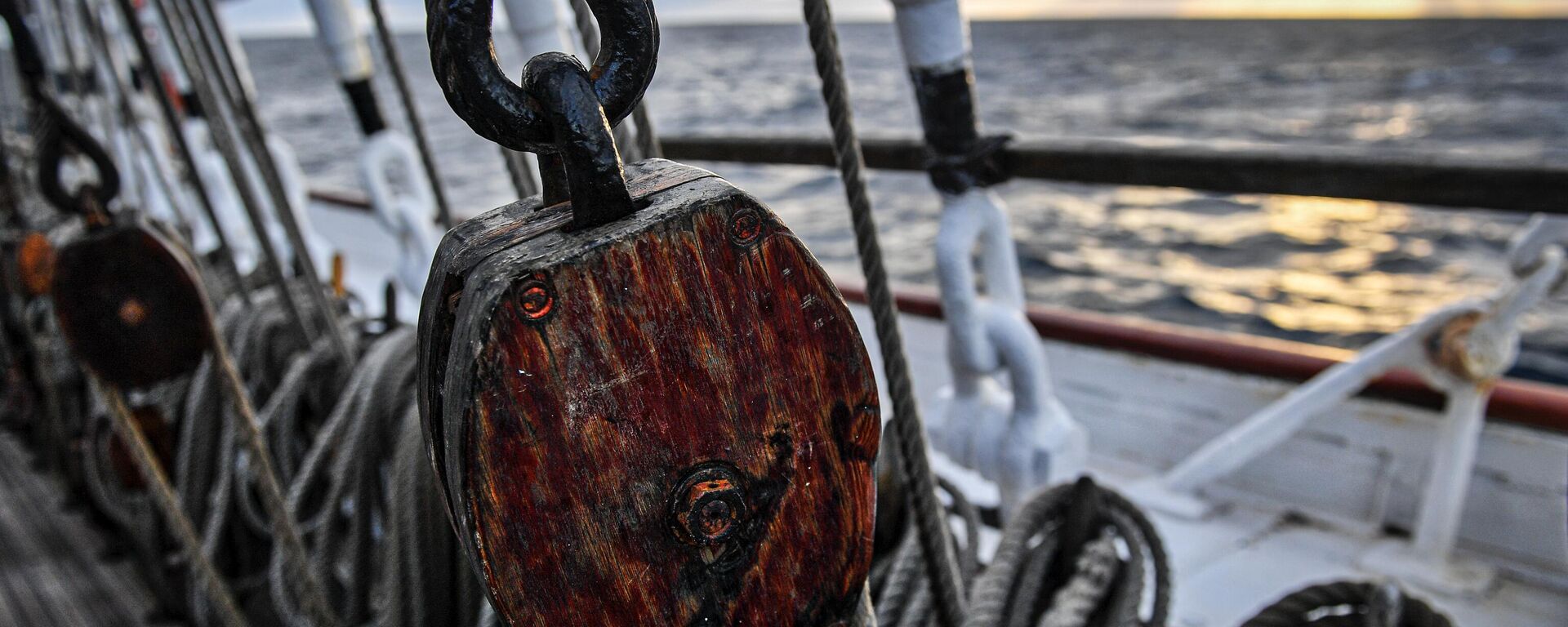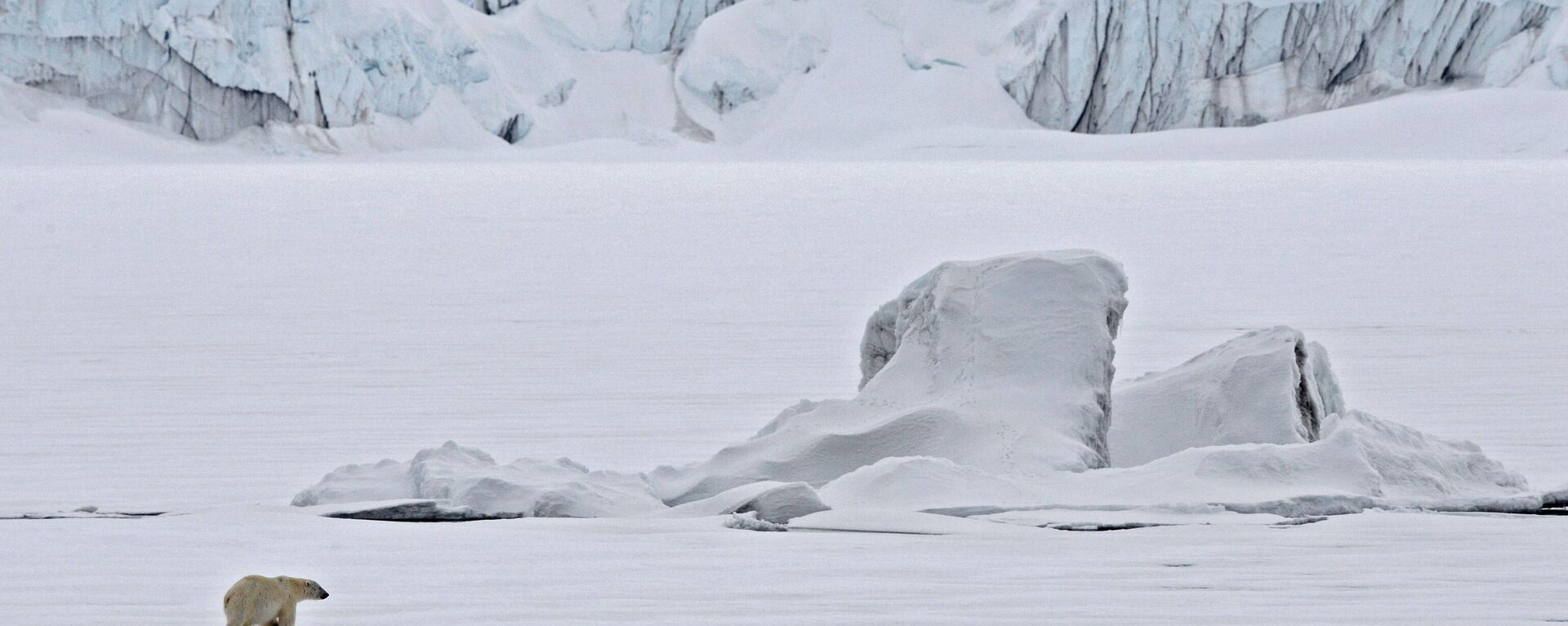https://sputnikglobe.com/20240723/how-pentagons-2024-arctic-strategy-invites-confrontation-in-high-north-1119475354.html
How Pentagon's 2024 Arctic Strategy Invites Confrontation in High North
How Pentagon's 2024 Arctic Strategy Invites Confrontation in High North
Sputnik International
The US Department of Defense (DoD) has released its new Arctic Strategy, claiming that the situation in the region is rapidly changing, while calling China a "pacing challenge" and Russia "an acute threat."
2024-07-23T18:18+0000
2024-07-23T18:18+0000
2024-07-23T18:18+0000
arctic
world
military & intelligence
russia
finland
pentagon
national defense strategy
northern sea route
us department of defense (dod)
nato
https://cdn1.img.sputnikglobe.com/img/106261/90/1062619099_0:54:1040:639_1920x0_80_0_0_1fd0546b2001419437be0921210d99a7.jpg
While the Pentagon's 2024 Arctic Strategy is the first update to the DoD approach to the region since 2019, it also builds upon the 2022 National Security Strategy and 2022 National Defense Strategy.Under the new strategy, the Pentagon will enhance its "domain awareness, communications, and intelligence, surveillance, and reconnaissance capabilities" in the Arctic. It will also "engage with allies and partners to uphold defense and deterrence in the Arctic." And, finally, the DoD will "exercise a calibrated presence in the Arctic by regularly training in the region and conducting operations critical to "upholding deterrence."The US military says that the Arctic region is undergoing rapid change: on the one hand, Russia and China are increasing collaboration in the region; on the other, Finland and Sweden's accession to NATO creates new opportunities for the Western military alliance in the High North.Although China is not an Arctic country, it plays a huge role in the Arctic policy of all countries - both Russia and NATO member states, according to the pundit.The Pentagon's strategy also refers to the fact that Russia continues to invest in new military infrastructure and modernize Soviet-era facilities in the region amid the special military operation in Ukraine.One should bear in mind that the shortest path by air for missiles or bombers between the US and Russia would be over the North Pole, Vorotnikov pointed out. NATO's expansion in the Arctic due to the accession of two Nordic nations – Finland and Sweden – provides new incentives for Russia's defense of its Arctic territories.Last December, CBS News quoted security experts as saying that the West's military footprint in the Arctic lags about 10 years behind Russia's. Meanwhile, the Kola Peninsula – which is located mostly in northwest Russia and partly in Finland and Norway – is home to Russia's Northern Fleet.Yet another issue of utmost importance touched upon by the renewed doctrine is that Russia controls the Northern Sea Route (NSR) which is taking on new significance as the shortest shipping route between the western part of Eurasia and the Asia-Pacific region amid climate change, the pundit continued.The NSR almost entirely goes through Russia’s territorial waters or the country’s exclusive economic zone (EEZ). Russian law stipulates that the NSR is a "historically developed national transport corridor". For its part, the US has repeatedly tried to challenge this stance by claiming that the route is "an international strait."The pundit pointed out that on July 11, the leaders of the US, Canada, and Finland announced their intent to create the Icebreaker Collaboration Effort, or ICE Pact, to enhance their presence in the High North.In addition, the doctrine also refers to global warming as a crucial regional factor in terms of economy, security and geopolitics."As the ice melts, the overall strategic importance of the region changes, because the Bering Strait between Alaska and Russia and the Barents Sea north of Norway become more navigable and more significant economically and militarily," the pundit noted. "The strategy notes that by 2030 we can generally expect that… the climate here will change so much that it will be possible not to use icebreakers."
https://sputnikglobe.com/20240723/china-condemns-us-distortions-of-its-arctic-policy-1119472014.html
https://sputnikglobe.com/20240723/russia-may-create-tanker-fleet-for-northern-sea-route-jointly-with-china-1119472317.html
https://sputnikglobe.com/20240715/us-attempts-to-threaten-russia-in-arctic-wont-be-a-cakewalk-1119381320.html
arctic
russia
finland
Sputnik International
feedback@sputniknews.com
+74956456601
MIA „Rossiya Segodnya“
2024
News
en_EN
Sputnik International
feedback@sputniknews.com
+74956456601
MIA „Rossiya Segodnya“
Sputnik International
feedback@sputniknews.com
+74956456601
MIA „Rossiya Segodnya“
pentagon's 2024 arctic strategy, us pivot to arctic, russian defense of arctic, us military buildup in the arctic region, us is seeking to deter russia and china in the arctic, finland and sweden accession to nato, nato's expansion in arctic, great power confrontation in the arctic
pentagon's 2024 arctic strategy, us pivot to arctic, russian defense of arctic, us military buildup in the arctic region, us is seeking to deter russia and china in the arctic, finland and sweden accession to nato, nato's expansion in arctic, great power confrontation in the arctic
How Pentagon's 2024 Arctic Strategy Invites Confrontation in High North
The US Department of Defense (DoD) has released its new Arctic Strategy, claiming that the situation in the region is rapidly changing, while calling China a "pacing challenge" and Russia "an acute threat."
While the Pentagon's 2024 Arctic Strategy is the first update to the DoD
approach to the region since 2019, it also builds upon the 2022 National Security Strategy and 2022 National Defense Strategy.
"The Pentagon will expand intelligence and information-sharing capabilities, work with allies and partners to contain Russia in the Arctic, and regularly conduct exercises and planned operations that have implications for defense and deterrence," Alexander Vorotnikov, a coordinator of the Expert Council of the Expert Center PORA (Arctic Development Project Office), told Sputnik, stressing that the new doctrine's approach is fraught with the risk of confrontation with Russia and China.
Under the new
strategy, the Pentagon will enhance its "domain awareness, communications, and intelligence, surveillance, and reconnaissance capabilities" in the Arctic. It will also "engage with allies and partners to uphold defense and deterrence in the Arctic." And, finally, the DoD will "exercise a calibrated presence in the Arctic by regularly training in the region and conducting operations critical to "upholding deterrence."
The US military says that the Arctic region is undergoing rapid change: on the one hand, Russia and China are
increasing collaboration in the region; on the other,
Finland and Sweden's accession to NATO creates new opportunities for the Western military alliance in the High North.
Although China is not an Arctic country, it plays a huge role in the Arctic policy of all countries - both Russia and NATO member states, according to the pundit.
The Pentagon's strategy also refers to the fact that Russia continues to invest in new military infrastructure and modernize Soviet-era facilities in the region amid the special military operation in Ukraine.
One should bear in mind that the shortest path by air for missiles or bombers between the US and Russia would be over the North Pole, Vorotnikov pointed out. NATO's
expansion in the Arctic due to the accession of two Nordic nations – Finland and Sweden – provides new incentives for Russia's defense of its Arctic territories.
Last December, CBS News quoted security experts as saying that the West's military footprint in the Arctic lags about 10 years behind Russia's. Meanwhile, the Kola Peninsula – which is located mostly in northwest Russia and partly in Finland and Norway – is home to Russia's
Northern Fleet.
Yet another issue of utmost importance touched upon by the renewed doctrine is that Russia controls the
Northern Sea Route (NSR) which is taking on
new significance as the shortest shipping route between the western part of Eurasia and the Asia-Pacific region amid climate change, the pundit continued.
The NSR almost entirely goes through Russia’s territorial waters or the country’s exclusive economic zone (EEZ). Russian law stipulates that the NSR is a "historically developed national transport corridor". For its part, the US has repeatedly tried to challenge this stance by claiming that the route is "an international strait."
The pundit pointed out that on July 11, the leaders of the US, Canada, and Finland announced their intent to create the Icebreaker Collaboration Effort, or ICE Pact, to enhance their presence in the High North.
"Finland, the US and Canada intend to jointly build an icebreaker fleet, which will operate in the Arctic zone. This will seriously affect Russia's actions in its Arctic zone," Vorotnikov said.
In addition, the doctrine also refers to global warming as a crucial regional factor in terms of economy, security and geopolitics.
"As the ice melts, the overall strategic importance of the region changes, because the Bering Strait between Alaska and Russia and the Barents Sea north of Norway become more navigable and more significant economically and militarily," the pundit noted. "The strategy notes that by 2030 we can generally expect that… the climate here will change so much that it will be possible not to use icebreakers."

